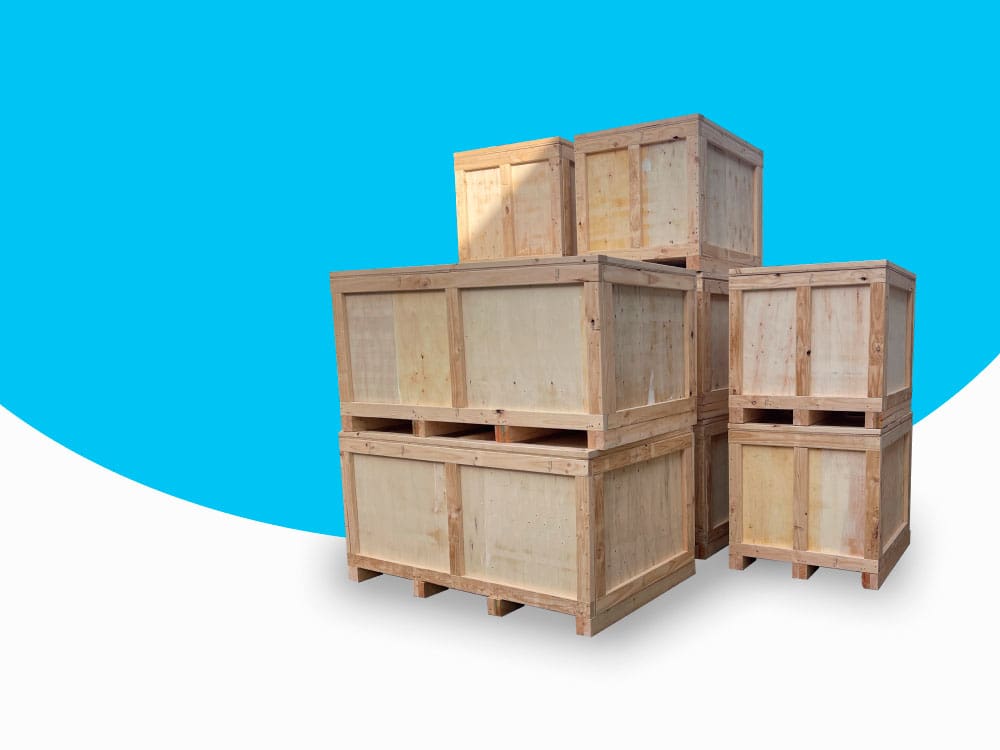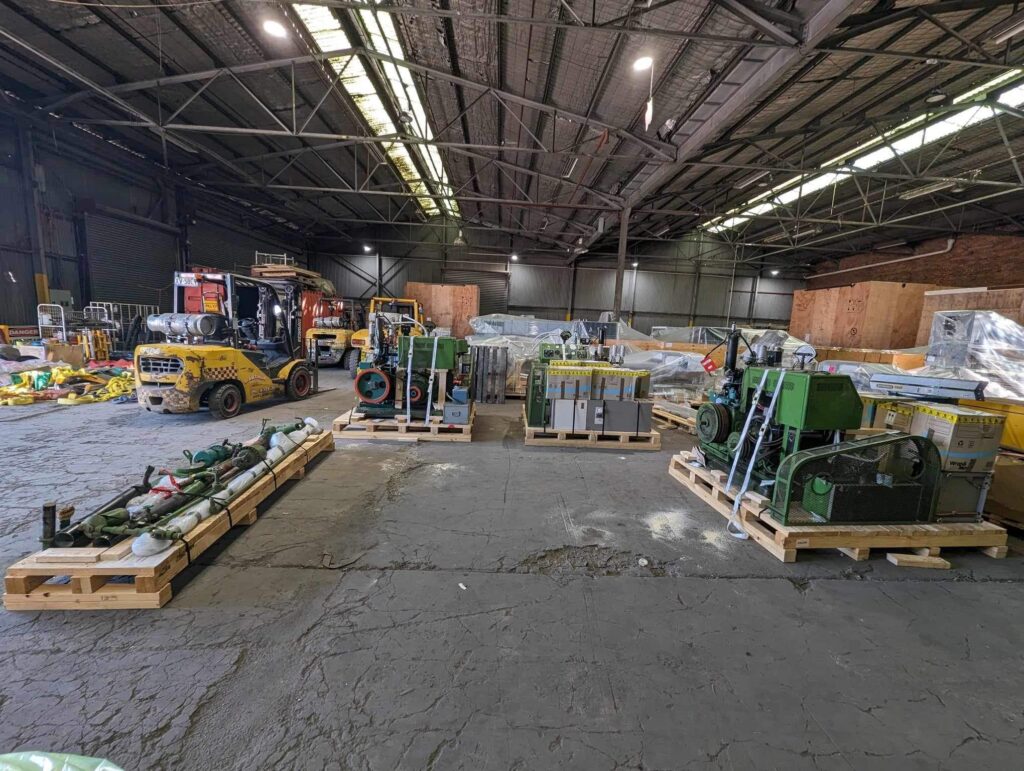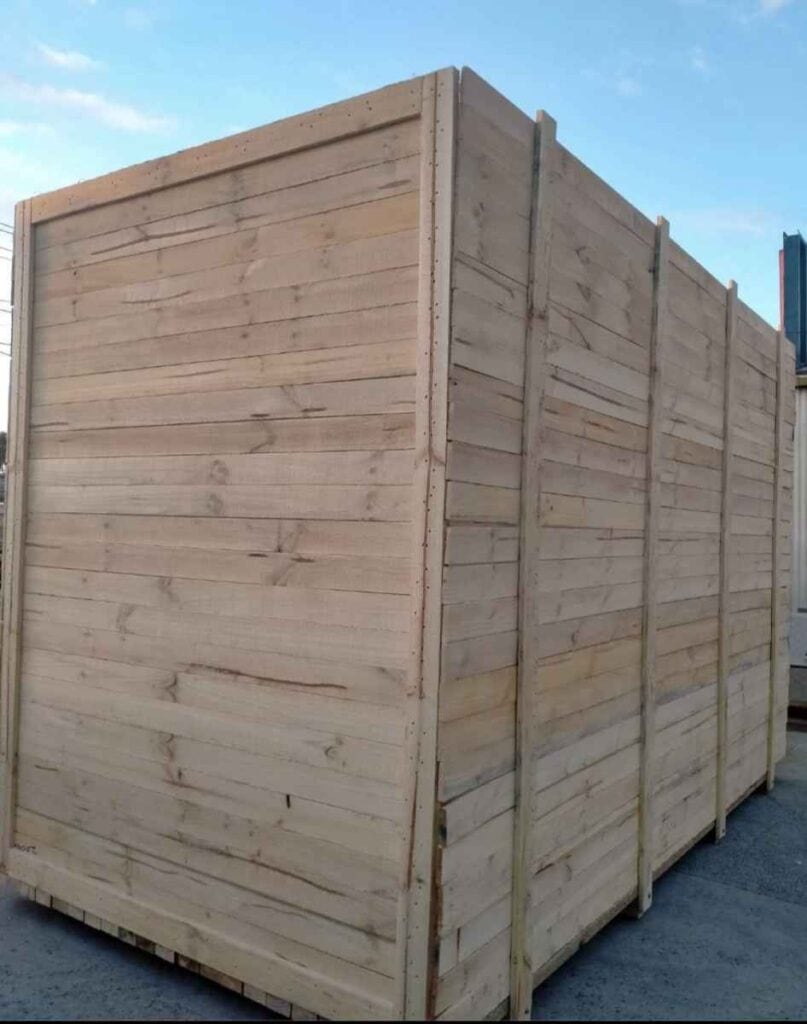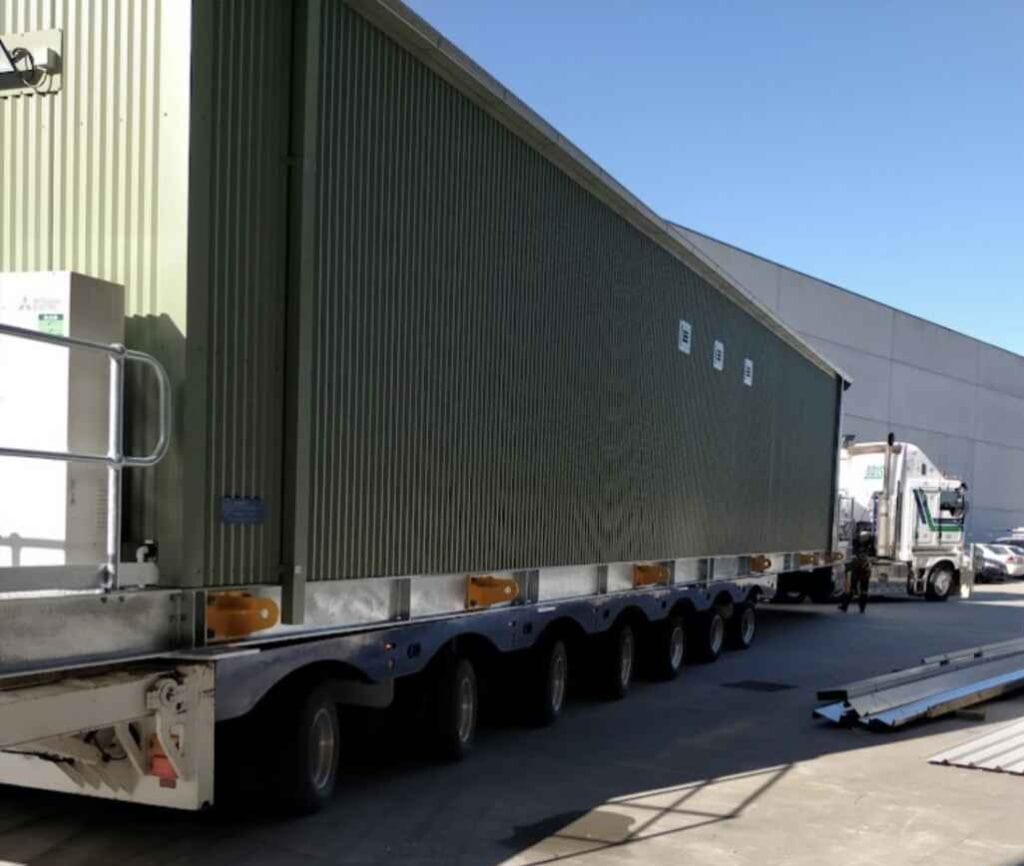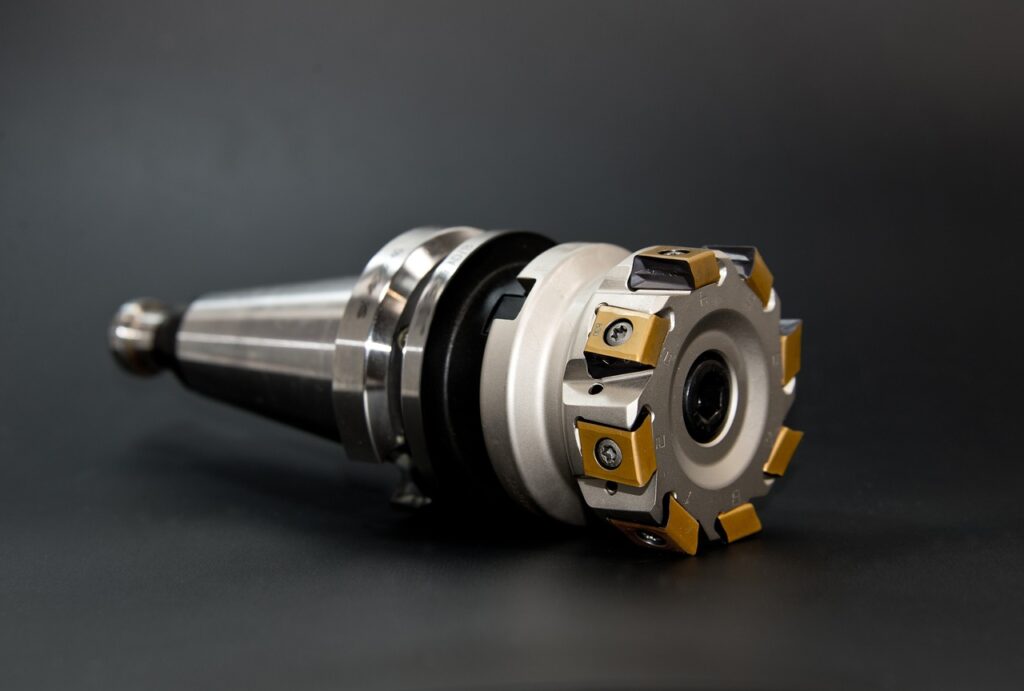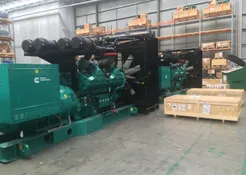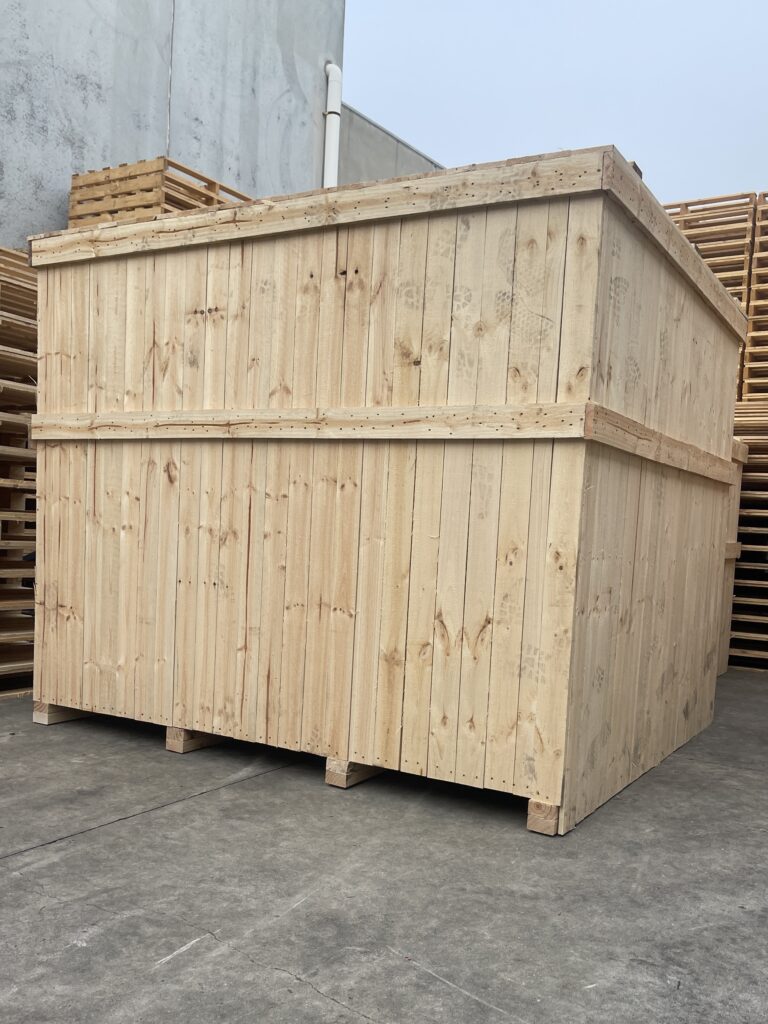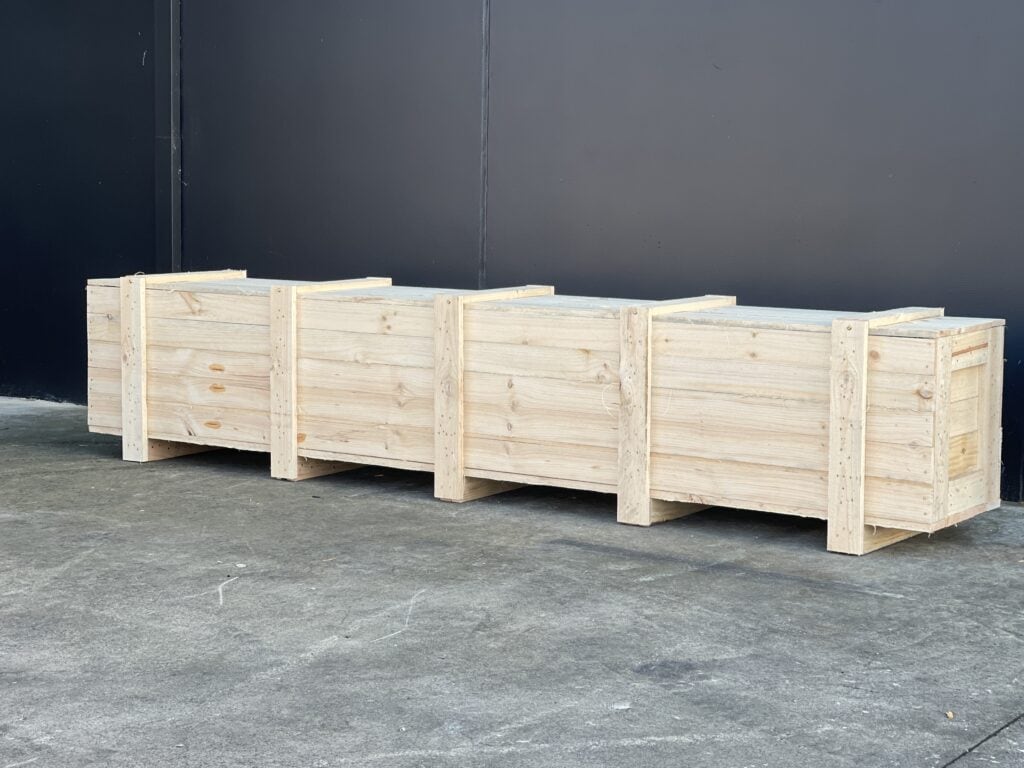What is Industrial Packaging?
Industrial packaging plays a crucial role in the safe transport and storage of goods. In this comprehensive guide, we will explore the various aspects of industrial packaging, its importance, different types, materials used, and how Crate N Pack Solutions excels in meeting industrial packaging requirements.
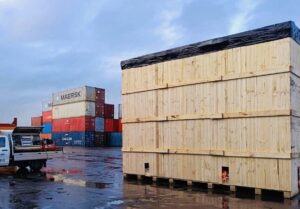
Table of Contents
- Introduction to Industrial Packaging
- Importance of Industrial Packaging
- Types of Industrial Packaging
- Materials Used in Industrial Packaging
- Customization in Industrial Packaging
- The Industrial Packaging Process
- Common Challenges in Industrial Packaging
- Case Studies: Successful Industrial Packaging Solutions
- How Crate N Pack Solutions Meets Industrial Packaging Needs
- Future Trends in Industrial Packaging
- Conclusion
1. Introduction to Industrial Packaging
Industrial packaging refers to the specialized methods and materials used to protect, transport, and store industrial goods. Unlike consumer packaging, which focuses on aesthetics and user experience, industrial packaging is all about durability, protection, and efficiency. This type of packaging is crucial for ensuring that goods are safely delivered from manufacturers to end users, often across long distances and through challenging environments.
Industrial packaging involves using sturdy materials specifically chosen for their ability to withstand harsh conditions and heavy loads. These materials include heavy-duty timber, metal, plastic, and reinforced cardboard, each selected based on the specific needs of the items being transported. The packaging must endure impacts, vibrations, and other stresses that occur during handling and shipping.
Additionally, industrial packaging is designed to maximize the efficiency of storage and transportation. This means considering space optimization, ease of handling, and compliance with regulatory standards. Effective industrial packaging solutions are often custom-designed to fit the unique dimensions and weight of the products, ensuring a snug and secure fit that minimizes movement and potential damage during transit.
In addition to physical protection, industrial packaging plays a critical role in maintaining the integrity of the goods. For items sensitive to environmental conditions, such as moisture, temperature fluctuations, or contamination, specialized packaging solutions may include protective linings, coatings, and seals. These features help preserve the quality and functionality of the products throughout their journey.
Overall, industrial packaging is a vital part of the supply chain, providing the necessary protection and support to ensure industrial goods reach their destination in optimal condition. Whether it’s heavy machinery, delicate electronic equipment, or bulk materials, the right packaging solution is essential for safeguarding the value and performance of industrial products.
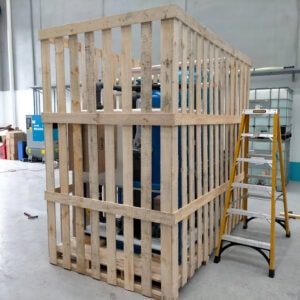
2. Importance of Industrial Packaging
Industrial packaging plays a vital role in the supply chain for several key reasons:
Protection: Industrial packaging is designed to provide robust protection for goods during transit and storage. It shields items from physical damage such as impacts, vibrations, and compression. Additionally, it safeguards against environmental factors like moisture, dust, and contaminants. For instance, machinery and electronic equipment can be highly sensitive to these elements, and without adequate protection, they could suffer significant damage, leading to costly repairs or replacements.
Efficiency: Effective industrial packaging facilitates the efficient handling, storage, and transportation of goods. Properly designed packaging solutions streamline loading and unloading processes, reducing the time and labor required. This efficiency is achieved through features like easy-open designs, stackable structures, and clear labeling. For example, customized wooden crates can be built to exact specifications, ensuring a perfect fit for the product and maximizing space utilization in shipping containers and storage facilities.
Compliance: Many industries are subject to stringent regulations that dictate specific packaging standards to ensure safety and compliance. For example, the transportation of hazardous materials is regulated by laws that require packaging to meet certain durability and containment standards. Industrial packaging must adhere to these regulations to prevent accidents and ensure the safe handling and transport of goods. Compliance with these standards also helps companies avoid legal penalties and maintain a good reputation.
Cost-Effectiveness: Good packaging can lead to significant cost savings by optimizing space and preventing damage. By using materials and designs that minimize the weight and volume of the packaging, shipping costs can be reduced. Additionally, the protection provided by industrial packaging reduces the likelihood of goods being damaged in transit, which in turn lowers the costs associated with returns, replacements, and downtime. For example, using high-quality, heat-treated wooden pallets can prevent infestations and rot, ensuring the longevity and reliability of the pallets during repeated use.
Environmental Impact: Increasingly, companies are considering the environmental impact of their packaging choices. Industrial packaging solutions that are recyclable, reusable, or made from sustainable materials can help reduce waste and the overall carbon footprint of the supply chain. This not only benefits the environment but also appeals to environmentally conscious consumers and business partners.
Overall, industrial packaging is a critical component of logistics and supply chain management, ensuring that goods are protected, handled efficiently, comply with regulations, and contribute to cost savings and environmental sustainability.
3. Types of Industrial Packaging
There are various types of industrial packaging, each suited to different needs and products:
a. Crates and Cases
Wooden Crates: Used for heavy or bulky items, wooden crates offer excellent protection. They are built with a solid timber base and an open slatted design, making them a cost-effective alternative to cases due to their lighter weight and reduced use of materials.
Timber Cases: Fully enclosed and ideal for smaller, more delicate items, timber cases provide robust protection during transit. They are constructed from high-grade timber and are typically stronger than wooden crates, making them suitable for adding linings, hardware, and stencils.

b. Pallets
Standard Pallets: Used for general transportation and storage, standard pallets are typically 1165x1165 mm in size and are essential for handling and moving goods efficiently.
Custom Pallets: Tailored to specific dimensions and load requirements, custom pallets are designed to meet the unique needs of different products. They ensure optimal use of space and secure transport for various items.
Double and Triple Pallets: Designed for extra-heavy loads, double and triple pallets provide additional strength and stability, making them suitable for transporting particularly heavy or bulky goods.
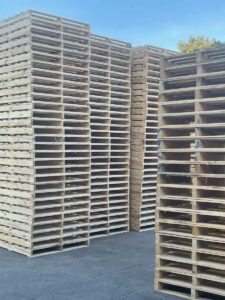
c. Drums and Barrels
Metal Drums: Used for liquids and hazardous materials, metal drums are durable and provide a high level of protection against external elements. They are commonly used in the chemical and oil industries.
Plastic Barrels: Suitable for chemicals and food-grade products, plastic barrels are lightweight, resistant to corrosion, and meet various regulatory standards for safety and hygiene.
d. Containers
Standard Shipping Containers: For large-scale transportation, standard shipping containers are used worldwide to move a wide range of goods. They are standardized in size and shape, making them compatible with various transport modes.
Custom Containers: Designed to meet specific shipping requirements, custom containers can be modified to include special features such as temperature control, additional security measures, or unique dimensions to accommodate specific products.
4. Materials Used in Industrial Packaging
Various materials are used in industrial packaging to ensure durability and protection, each offering unique benefits tailored to specific needs and conditions:
a. Wood
Strength: Wood is a traditional and highly reliable material for industrial packaging, particularly for heavy loads and items requiring rough handling. It provides excellent structural integrity, making it ideal for creating sturdy crates, cases, and pallets that can withstand the rigors of transportation.
Customizable: One of the key advantages of wood is its versatility. It can be easily cut, shaped, and assembled to meet specific requirements. This customization allows for the creation of packaging solutions tailored to the exact dimensions and weight of the products being transported. Whether it's a custom-sized crate or a pallet designed to handle a unique load, wood offers unmatched flexibility.
Environmental Impact: While wood is a natural and renewable resource, it’s important to source it responsibly. Using certified sustainable timber helps reduce the environmental impact and supports eco-friendly practices in the packaging industry.
b. Plastic
Durable: Plastic packaging is known for its resistance to moisture, chemicals, and corrosion. This durability makes it an excellent choice for protecting items that are sensitive to environmental factors, such as electronics, chemicals, and food products. Plastic pallets, crates, and containers provide a strong barrier against external elements, ensuring the integrity of the goods.
Lightweight: Compared to wood and metal, plastic is significantly lighter, which makes handling and transportation easier and more efficient. The reduced weight can lead to lower shipping costs and improved logistical efficiency. Plastic packaging can also be designed with ergonomic features, such as handles and grips, to facilitate manual handling.
Recyclability: Many plastic packaging products are recyclable, contributing to sustainability efforts. Recycled plastic can be used to produce new packaging materials, reducing waste and conserving resources.
c. Metal
Robust: Metal packaging offers the highest level of protection for industrial goods, particularly for hazardous or valuable items. Metal containers and drums are incredibly strong and can withstand extreme conditions, including high impact, temperature variations, and exposure to harsh chemicals.
Reusable: One of the significant advantages of metal packaging is its reusability. Metal containers can be cleaned and reused multiple times, making them a cost-effective and sustainable option for long-term use. This durability extends the lifespan of the packaging, reducing the need for frequent replacements.
Special Applications: Metal is often used for packaging items that require airtight and watertight seals, such as liquids, gases, and sensitive electronics. Its robustness makes it the preferred choice for transporting dangerous goods, ensuring compliance with safety regulations.
d. Cardboard
Cost-Effective: Cardboard is an economical option for industrial packaging, particularly for lighter loads and less demanding conditions. It is widely used for shipping and storing a variety of products, from consumer goods to industrial components. Cardboard packaging is relatively inexpensive to produce and can be easily sourced.
Recyclable: Cardboard is one of the most environmentally friendly packaging materials due to its high recyclability. It can be easily recycled and repurposed into new packaging materials, reducing waste and supporting sustainable practices. Using recycled cardboard helps lower the environmental footprint of packaging operations.
Versatility: Cardboard can be printed and branded, providing opportunities for marketing and product identification. It can also be designed with protective features such as padding, partitions, and inserts to provide additional cushioning and support for delicate items.
Lightweight: Similar to plastic, cardboard is lightweight and easy to handle, making it suitable for packaging a wide range of products. Its light weight also contributes to lower shipping costs and improved efficiency in handling and transportation.
Overall, the choice of material for industrial packaging depends on the specific needs of the products being transported, the environmental conditions they will encounter, and the logistical requirements of the supply chain. Each material offers distinct advantages that can be leveraged to ensure the safe and efficient transport of industrial goods.
5. Customization in Industrial Packaging
Customization is a crucial element in industrial packaging, as it ensures that the packaging solutions are specifically designed to meet the unique needs of both the product and the customer. This involves several key aspects:
Size and Dimensions: Customization often starts with tailoring the size and dimensions of the packaging to fit the product precisely. This ensures that the product is securely held in place, minimizing movement during transport and reducing the risk of damage. Whether it’s a custom-sized crate, case, or pallet, accurately fitting packaging helps optimize space and improves overall efficiency.
Load Capacity: The load capacity of packaging is a critical factor in ensuring it can support the weight and bulk of the product. Custom packaging solutions are designed to handle specific weight requirements, preventing overloading and ensuring that the packaging can withstand the stresses of handling and transportation. This is particularly important for heavy machinery, industrial components, and other high-weight items.
Material Selection: Choosing the right materials is essential for protecting the product from various risks such as impact, moisture, and environmental conditions. Custom packaging allows for the selection of appropriate materials—whether it’s robust wood, durable plastic, or strong metal—based on the product’s specific needs. This tailored approach ensures that the packaging offers optimal protection and performance.
Special Features: To enhance functionality and protection, custom packaging can include various special features. This might involve adding internal linings to cushion delicate items, incorporating hardware such as handles or locking mechanisms for easier handling and security, or including stencils and labels for clear identification and compliance with shipping regulations. These additional features can be crucial for products with specific handling requirements or those that need to meet particular industry standards.
Custom industrial packaging is designed to address the unique challenges of each product and shipping scenario, ensuring that goods are protected, handled efficiently, and transported safely. This tailored approach helps optimize packaging performance, reduce costs associated with damage and inefficiencies, and ultimately deliver a better overall experience for both the customer and the end user.

6. The Industrial Packaging Process
The industrial packaging process is a structured approach designed to ensure that packaging solutions are both effective and efficient. It involves several critical steps:
a. Assessment
Product Analysis: The process begins with a thorough understanding of the product’s characteristics and requirements. This includes its size, weight, fragility, and any special handling needs.
Risk Assessment: Identifying potential hazards and challenges associated with the product’s transportation and storage is essential. This helps in designing packaging that addresses these risks and protects the product from damage.
b. Design
Custom Design:Based on the product analysis and risk assessment, a custom packaging solution is designed. This involves creating packaging that fits the product perfectly and meets all necessary specifications.
Prototype Development: A prototype of the packaging is developed and tested to ensure it meets all the requirements. This stage allows for adjustments and refinements before full-scale production begins.
c. Production
Material Selection: Choosing the appropriate materials is crucial for ensuring the packaging provides adequate protection and meets the product’s needs. The selection process considers factors such as durability, weight, and environmental impact.
Manufacturing: Once the design is finalized and materials are chosen, the packaging is produced according to the specified design. This stage involves cutting, assembling, and finishing the packaging to ensure it meets all standards and specifications.
d. Testing
Durability Testing: The packaging undergoes durability testing to ensure it can withstand the conditions it will encounter during transportation and storage. This may include tests for impact resistance, moisture protection, and overall structural integrity.
Quality Control: A thorough quality control process is implemented to check the packaging for any defects or issues. This ensures that every unit of packaging meets the required standards and is free from manufacturing errors.
e. Implementation
Packaging: The product is securely packed into the finalized packaging. This step involves careful handling to ensure the product is protected and positioned correctly within the packaging.
Transportation: Finally, the packaging is designed to facilitate easy and safe transport. This includes considerations for loading, stacking, and securing the packaged product to prevent damage during shipping.
The industrial packaging process is a comprehensive approach that ensures packaging solutions are tailored to meet specific product needs, withstand transportation challenges, and deliver efficient and effective protection.

7. Common Challenges in Industrial Packaging
Industrial packaging often encounters several challenges, each requiring specific solutions to ensure effectiveness and efficiency:
a. Handling Heavy Loads
Challenge: Packaging for heavy loads must be strong enough to support and protect substantial weight without compromising structural integrity. Heavy items can strain packaging materials and potentially lead to damage during transportation or storage.
Solution: To address this challenge, it's essential to use robust materials such as reinforced wood, metal, or heavy-duty plastic. Designing packaging with appropriate load-bearing capabilities and incorporating structural supports like braces or custom inserts can help distribute weight evenly and prevent damage.
b. Ensuring Durability
Challenge: Packaging must be durable enough to withstand rough handling, environmental conditions, and the rigors of transit. Durability is crucial to avoid breakage or degradation that could lead to product damage or loss.
Solution: Conducting thorough durability testing is key. This involves subjecting the packaging to various stress tests, including impact, compression, and environmental exposure, to ensure it performs reliably under real-world conditions. Quality control processes should also be in place to detect any weaknesses before packaging is used in the field.
c. Compliance with Regulations
Challenge: Industrial packaging must comply with industry standards and regulations, which can vary by sector and region. Non-compliance can lead to legal issues, fines, and disruptions in shipping.
Solution: Staying informed about the latest industry standards and regulatory requirements is essential. Regularly reviewing and updating packaging practices to align with these regulations helps ensure compliance. This may include adhering to specific guidelines for materials, labeling, and safety features.
Addressing these common challenges in industrial packaging involves a combination of strategic planning, material selection, rigorous testing, and regulatory awareness. By proactively tackling these issues, companies can enhance the effectiveness of their packaging solutions and ensure the safe and efficient transport of their products.

8. Case Studies: Successful Industrial Packaging Solutions
Case Study 1: Heavy Machinery Packaging
Challenge:
Transporting heavy machinery across international borders presented several challenges, including the need for packaging that could handle significant weight, resist impacts, and endure varied handling conditions. The machinery was both bulky and heavy, requiring a solution that could support its weight and prevent damage during long-haul transit.
Solution:
We developed custom-built wooden crates specifically designed for the heavy machinery. These crates featured reinforced bases and structural supports to handle the substantial weight of the equipment. The design incorporated heavy-duty wood and additional bracing to ensure stability and durability throughout the journey.
To address potential impacts and vibrations, we added cushioning materials to the interior of the crates. This included high-density foam inserts and shock-absorbent padding to protect the machinery from jolts and vibrations during handling and transportation. The crates were also equipped with secure fastenings and sturdy lifting points to facilitate safe loading and unloading.
The result was a packaging solution that successfully safeguarded the machinery, ensuring it arrived at its international destination without any damage. This case demonstrates our expertise in creating packaging solutions tailored to the specific needs of heavy and complex equipment.
Case Study 2: Delicate Equipment Packaging
Challenge:
Shipping delicate electronic equipment required a packaging solution that could prevent damage while maintaining the integrity of sensitive components. The challenge was to create packaging that would provide maximum protection against impacts, moisture, and environmental factors, ensuring the equipment arrived in pristine condition.
Solution:
For this project, we designed custom timber cases tailored to the specific dimensions and fragility of the electronic equipment. The cases featured foam linings that provided a cushioned environment for the delicate components. This foam was precision-cut to fit the equipment perfectly, creating a secure and shock-absorbent barrier.
The timber cases were constructed with secure fastenings and reinforced corners to prevent any movement of the equipment during transit. Additionally, we included moisture-resistant treatments to protect against environmental conditions that could affect the equipment.
To further enhance protection, the cases were equipped with ventilation holes to prevent overheating and condensation inside the packaging. This thoughtful design ensured that the electronic equipment was shielded from both physical and environmental risks.
As a result, the delicate electronic equipment was transported safely and arrived at its destination without any issues. This case highlights our ability to handle sensitive items with the utmost care and precision, delivering packaging solutions that meet stringent protection requirements.
### 9. How Crate N Pack Solutions Meets Industrial Packaging Needs
Crate N Pack Solutions stands out in the industrial packaging sector by delivering comprehensive and tailored solutions that address diverse packaging needs. Here’s how we excel in meeting these needs:
**Custom Crating**
We specialize in designing and constructing custom crates that are specifically tailored to your product’s dimensions, weight, and handling requirements. Our team works closely with you to understand the unique characteristics of your product and to create crates that offer optimal protection and support. Whether you need crates for heavy machinery, delicate items, or oversized goods, our custom crating solutions ensure that your products are securely packaged and ready for any logistical challenge.
**On-Site Packaging**
Our dedicated on-site packaging services bring our expertise directly to your location. This approach allows us to handle and pack heavy machines and equipment right where they are, eliminating the need for additional transport and reducing potential risks. Our skilled team manages the entire packaging process, from assembling crates to securing equipment, ensuring that everything is packed securely and efficiently for transport. This hands-on service helps streamline your operations and ensures that your equipment is ready for shipment without delay.
**Export Packaging**
Crate N Pack Solutions ensures that your goods are packaged to meet international shipping standards. We understand the complexities of export regulations and design packaging solutions that comply with these requirements. Our export packaging services include preparing documentation, adhering to international standards, and using materials that protect your products during long-haul transport. This meticulous approach ensures that your goods arrive safely and on time, meeting all global shipping standards and avoiding potential delays or issues.
By combining these services, Crate N Pack Solutions delivers industrial packaging solutions that are both efficient and reliable, tailored to meet the specific needs of your products and ensuring smooth transit from start to finish.
10. Future Trends in Industrial Packaging
The future of industrial packaging is poised to be shaped by several key trends that reflect evolving industry needs and technological advancements:
Sustainability
There is a growing emphasis on sustainability in industrial packaging. Companies are increasingly turning to recyclable and eco-friendly materials to reduce environmental impact. Innovations in biodegradable materials and the development of closed-loop systems for packaging reuse are becoming more prevalent. These sustainable practices not only help in minimizing waste but also align with global efforts to promote environmental responsibility.
Automation
The integration of automation and advanced technology into the packaging process is transforming industrial packaging. Automated systems are being used to enhance efficiency, accuracy, and speed in packaging operations. Robotics, automated assembly lines, and smart packaging solutions are streamlining processes, reducing labor costs, and improving consistency in packaging quality. These technological advancements are set to drive significant improvements in productivity and operational efficiency.
Customization
Customization continues to be a major focus in industrial packaging. As businesses seek more tailored solutions to meet specific product requirements, there is an increasing demand for packaging that can be customized to fit unique dimensions, load capacities, and protection needs. Advances in design technology, such as 3D modeling and CAD software, are enabling more precise and adaptable packaging solutions. This trend towards personalization helps in addressing diverse packaging challenges and ensuring that products are packaged in a manner that maximizes safety and functionality.
These trends highlight the dynamic nature of the industrial packaging industry, where sustainability, automation, and customization are driving innovation and shaping the future of packaging solutions.
11. Conclusion
Industrial packaging plays a crucial role in ensuring the safe and efficient transport and storage of goods. It requires the use of durable materials and custom designs to protect products from damage, while also meeting regulatory standards. At Crate N Pack Solutions, we are committed to delivering top-notch industrial packaging solutions tailored to the specific needs of our clients. Whether you require custom crates, on-site packaging services, or export-ready solutions, our expertise and experience ensure that we provide reliable, high-quality results every time. Your products are in safe hands with us, ready to withstand the rigors of transportation and storage.



